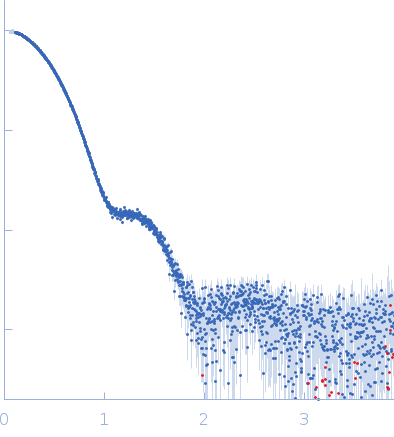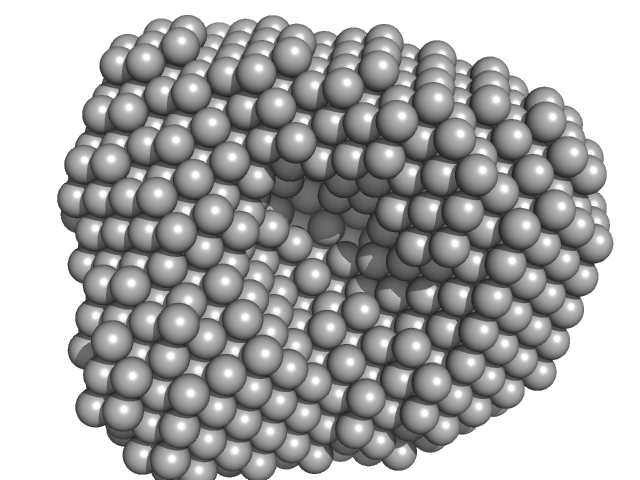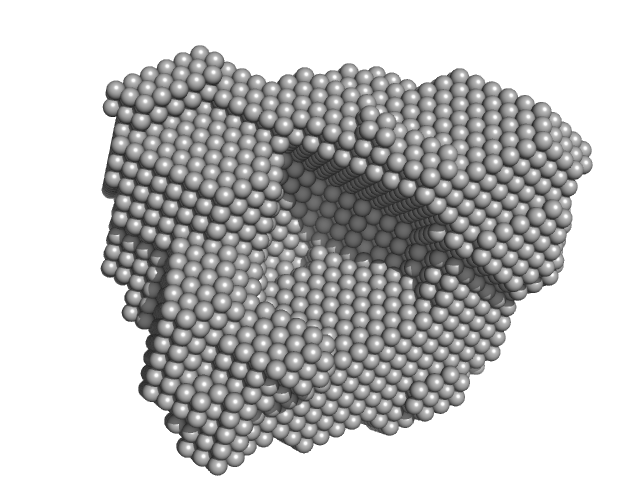|
Synchrotron SAXS data from solutions of wild type 4-hydroxy-tetrahydrodipicolinate synthase in 20 mM Tris-HCl, 150 mM NaCl, pH 8 were collected on the B21 beam line at the Diamond Light Source (Didcot, UK) using a Pilatus 2M detector at a sample-detector distance of 4 m and at a wavelength of λ = 0.1 nm (I(s) vs s, where s = 4πsinθ/λ, and 2θ is the scattering angle). In-line size-exclusion chromatography (SEC) SAS was employed. The SEC parameters were as follows: A 50.00 μl sample at 10 mg/ml was injected at a 0.16 ml/min flow rate onto a GE Superdex 200 Increase 10/300 column . 619 successive 3 second frames were collected. The data were normalized to the intensity of the transmitted beam and radially averaged; the scattering of the solvent-blank was subtracted.
The models displayed in this entry represent: Top, the averaged (DAMFILT) model obtained from the spatial alignment of several individual DAMMIF models (volume and bead occupancy corrected) and; Bottom, an individual DAMMIF model representative and corresponding fit. Additional individual DAMMIF models (in P1 symmetry) are provided in the full entry zip archive.
|
|
 s, nm-1
s, nm-1

